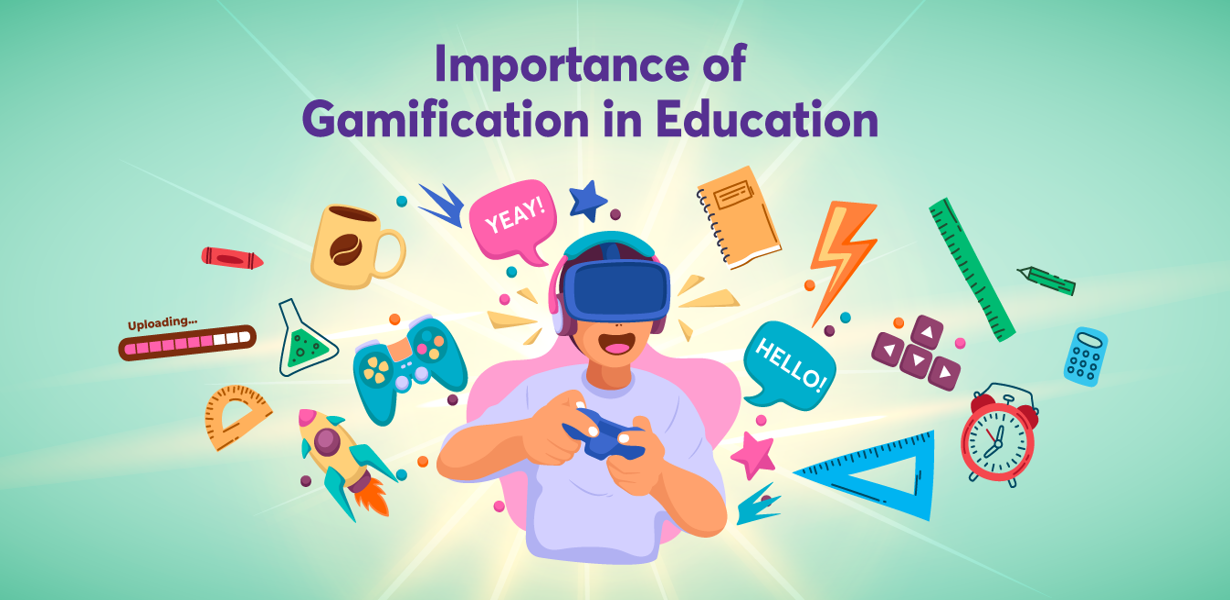
In the realm of education, gamification has emerged as a powerful tool to captivate and motivate learners by incorporating game elements into the learning process. By leveraging the inherent human inclination for play, gamification transforms traditional educational approaches into immersive and interactive experiences. This article explores the concept of gamification in education, delving into its meaning, benefits, and practical applications.
Understanding Gamification in Education
What is Gamification in Education?
Gamification in education refers to the integration of game-based elements and mechanics into the learning environment to enhance student engagement, motivation, and knowledge retention. It harnesses the power of intrinsic and extrinsic rewards, challenges, competition, and a sense of progression to create a dynamic and interactive learning experience. By adopting game-like features, such as point systems, leaderboards, badges, and quests, educators can transform mundane tasks into exciting and enjoyable activities that foster a love for learning.
Benefits of Gamification in Education
Gamification in education offers a myriad of benefits that revolutionize the traditional classroom experience. Let’s explore some of the key advantages:
- Enhanced Student Engagement: By infusing elements of play and interactivity, gamification entices students to actively participate in their learning journey. The immersive nature of games sparks curiosity, encourages exploration, and sustains attention, leading to higher levels of engagement.
- Motivation and Intrinsic Drive: Gamification taps into students’ intrinsic motivation by providing clear goals, feedback, and meaningful rewards. The sense of achievement derived from unlocking new levels, earning badges, or surpassing challenges fuels students’ desire to excel and promotes a growth mindset.
- Knowledge Retention and Application: Through gamified experiences, students can reinforce their understanding and retention of concepts. The application of knowledge within a game context allows learners to practice critical thinking, problem-solving, and decision-making skills in a safe and engaging environment.
- Personalized Learning: Gamification facilitates personalized learning experiences by adapting the level of difficulty and pace of progression to each student’s individual needs. This adaptive nature ensures that learners are continuously challenged, yet not overwhelmed, fostering a sense of accomplishment.
- Collaboration and Social Interaction: Many gamified learning platforms incorporate collaborative features, encouraging teamwork, peer-to-peer interaction, and healthy competition. Students can engage in cooperative problem-solving, communicate ideas, and develop valuable social skills.
Implementing Gamification Strategies in Education
To harness the full potential of gamification in education, educators can employ various strategies and tools. Here are three actionable tips for integrating gamification into the classroom:
- Set Clear Goals and Objectives: Clearly define the learning goals and objectives for each gamified activity. Ensure that these goals align with the curriculum and provide students with a sense of purpose and direction. By establishing measurable objectives, educators can track progress and provide targeted feedback to students.
- Design Engaging Game Mechanics: Carefully craft game mechanics that align with the learning objectives and appeal to students’ interests. Incorporate elements such as leaderboards, achievements, virtual currencies, and unlockable content to incentivize participation and foster healthy competition. Strive to strike a balance between challenge and achievable success to maintain students’ motivation.
- Provide Meaningful Rewards: Offer both intrinsic and extrinsic rewards to recognize students’ achievements and progress. Intrinsic rewards, such as virtual badges or leveling up, tap into students’ sense of accomplishment and self-worth. Extrinsic rewards, such as certificates or small prizes, further enhance motivation and reinforce positive behaviors. However, it’s important to emphasize the intrinsic value of learning itself to cultivate a genuine love for knowledge.
FAQs (Frequently Asked Questions)
Q1. How can gamification benefit students with different learning styles?
A1. Gamification caters to diverse learning styles by providing multiple entry points, accommodating various intelligences, and offering differentiated challenges. Visual learners can benefit from engaging graphics and interactive elements, while auditory learners can leverage audio cues or narration. Kinesthetic learners can actively participate through hands-on interactions, simulations, or physical movement within the game.
Q2. Is gamification suitable for all age groups?
A2. While gamification can be applied across different age groups, the specific design and mechanics should be tailored to the target audience. Younger learners may require simpler game structures and intuitive interfaces, while older students can engage with more complex narratives and decision-making scenarios.
Q3. Can gamification be integrated into traditional subjects like mathematics or science?
A3. Absolutely! Gamification can be seamlessly integrated into various subjects, including mathematics, science, language arts, and history. For example, math problems can be transformed into game-based puzzles, science concepts can be explored through virtual experiments, and historical events can be reenacted through interactive storytelling.
Q4. How can educators assess learning outcomes in gamified environments?
A4. Educators can leverage formative and summative assessments within gamified environments. Formative assessments, such as quizzes or challenges, embedded within the game provide real-time feedback and guide students’ progress. Summative assessments, such as traditional tests or projects, can evaluate students’ overall comprehension and application of knowledge beyond the game context.
Q5. What are some notable gamified learning platforms available for educators?
A5. There are several gamified learning platforms available, each offering unique features and approaches. Some notable examples include Classcraft, Kahoot!, Minecraft: Education Edition, and Duolingo. These platforms provide educators with a range of options to explore and select based on their specific learning objectives and students’ needs.
Conclusion
Gamification in education holds immense potential to transform the learning landscape by instilling excitement, motivation, and effective knowledge acquisition. Through the integration of game elements, educators can engage students in a dynamic and interactive manner, fostering a love for learning and promoting meaningful educational experiences. By embracing gamification and employing effective strategies, educators can unlock the full potential of their students, equipping them with the skills necessary for success in the 21st-century digital world.
Advertisement







